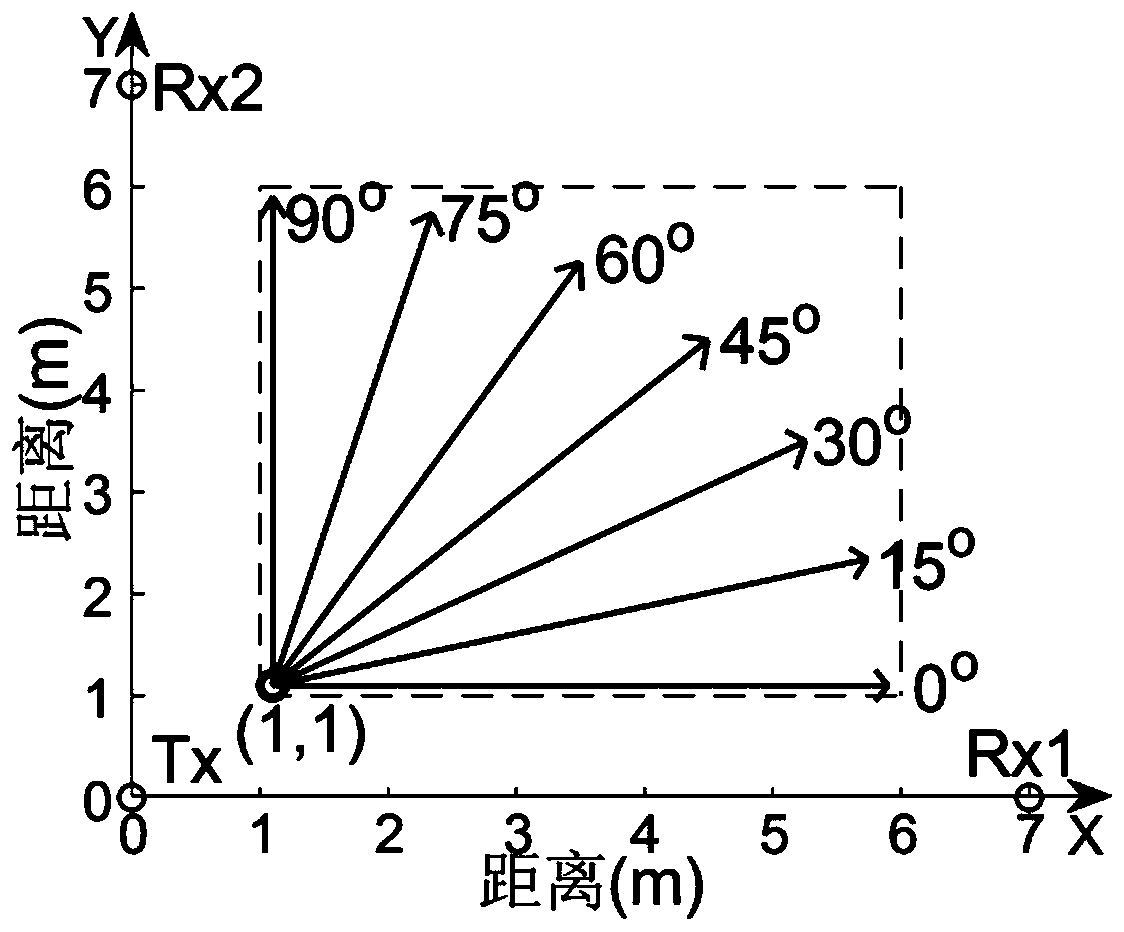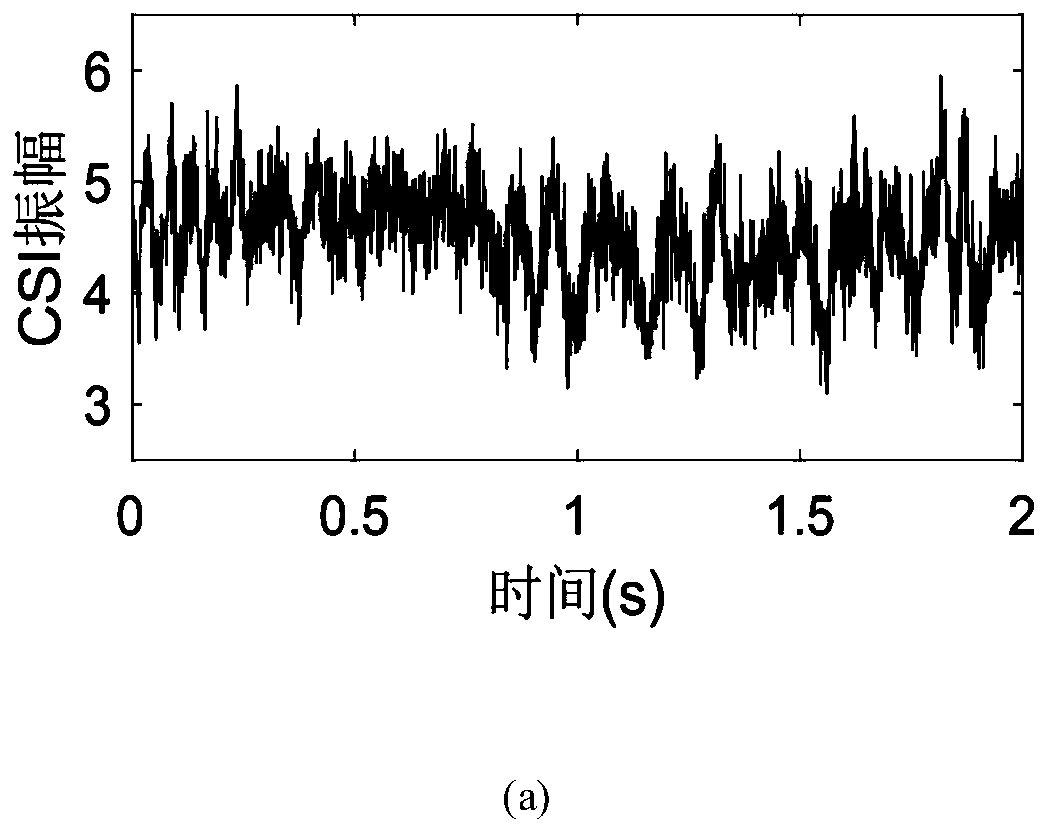A gait recognition method with independent directions based on commercial Wi-Fi
A commercial technology for gait recognition, which is applied in the field of computer networks, can solve the problem of single gait recognition method, and achieve the effect of low price, good versatility, and cost saving
- Summary
- Abstract
- Description
- Claims
- Application Information
AI Technical Summary
Problems solved by technology
Method used
Image
Examples
Embodiment 1
[0046] A direction-independent gait recognition method based on commercial Wi-Fi, see figure 1 , the method includes the following steps:
[0047] 101: The subject repeatedly walks a specified distance in a predetermined area, and collects the subject's CSI signal through a commercial Wi-Fi device;
[0048] 102: Use the Butterworth bandpass filter to denoise all the amplitude data, and use the PCA dimensionality reduction algorithm to remove data redundancy and further reduce noise;
[0049] 103: Use the data after PCA dimensionality reduction to perform motion detection according to the different states of the PSD distribution of the CSI signal in the walking and stationary states;
[0050] 104: According to the Fresnel theory, the number of Fresnel zones passing through and the phase delay of the amplitude signal are measured from the CSI signal, and the walking direction of the subject is deduced based on these data;
[0051] 105: Perform STFT (short-time Fourier transfor...
Embodiment 2
[0058] Below in conjunction with concrete example, calculation formula, the scheme in embodiment 1 is further introduced, see the following description for details:
[0059] 1. Using commercial Wi-Fi to collect CSI signals
[0060] Since the embodiment of the present invention is designed for a smaller application environment, the number of people that can be recognized is limited, here we take the number of 6 people that can make the recognition accuracy within an acceptable range.
[0061] 1) One commercial Wi-Fi device acts as the transmitting end, and the other two commercial Wi-Fi devices act as the receiving end, forming two pairs of links. These two pairs of links are placed vertically to form a Cartesian coordinate system. The transmitter is located at the origin of the coordinates, and the two receivers are located on the X-axis and Y-axis respectively, 7m away from the receiver;
[0062] For example: a router, as a transmitter, continuously transmits wireless signal...
Embodiment 3
[0142] The functions and effects of the above-mentioned embodiments 1 and 2 are shown below in conjunction with the accompanying drawings.
[0143] This example uses CSI data processing as an example to give a specific implementation method, and the specific steps are as follows:
[0144] Use one laptop as the Wi-Fi access point, that is, the sender, and the other two laptops as the receiver, all three laptops are installed with Intel 5300NIC and Ubuntu 14.04LTS desktop system, and the transmitter has 3 antennas, each There are 3 antennas at the receiving end, the distance between the 3 antennas at each end is one wavelength (5.79cm), and they are located on a straight line. The transmitting end and the receiving end are placed on three small table boards, 40cm away from the ground. At the same time, the transmitting end and each receiving end form a pair of links. The two pairs of links are perpendicular to each other to form a plane rectangular coordinate system. The transmi...
PUM
 Login to View More
Login to View More Abstract
Description
Claims
Application Information
 Login to View More
Login to View More - R&D
- Intellectual Property
- Life Sciences
- Materials
- Tech Scout
- Unparalleled Data Quality
- Higher Quality Content
- 60% Fewer Hallucinations
Browse by: Latest US Patents, China's latest patents, Technical Efficacy Thesaurus, Application Domain, Technology Topic, Popular Technical Reports.
© 2025 PatSnap. All rights reserved.Legal|Privacy policy|Modern Slavery Act Transparency Statement|Sitemap|About US| Contact US: help@patsnap.com



